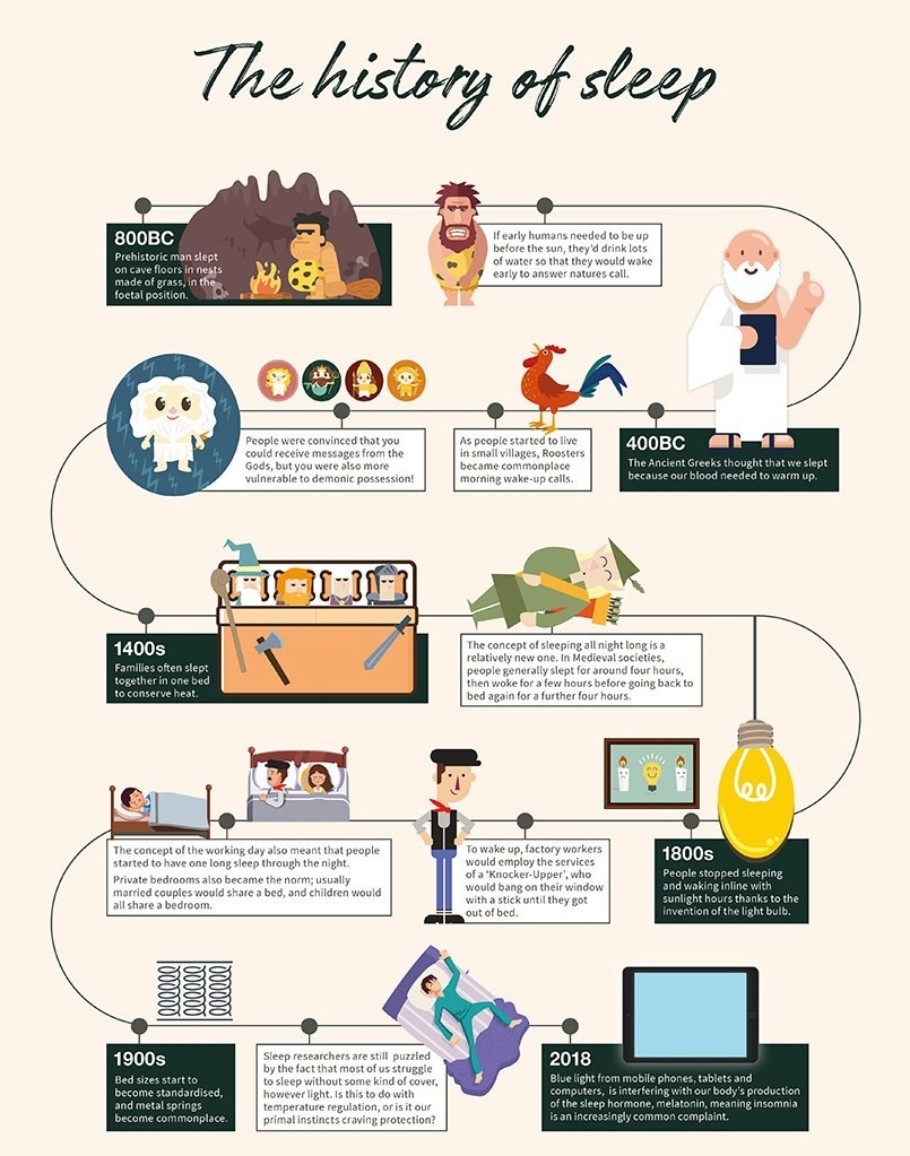The History of Sleep
23rd January 2020
Slumber Centre
Here at Harrison Spinks, everything we do revolves around getting a good night’s rest. There’s not much that we can’t tell you about catching Z’s, so we thought we’d take you on a whistle-stop tour of the history of sleep. Let’s start right at the beginning…
Early Man
Prehistoric man is known to have slept on cave floors, in nests made of grass. Doesn’t sound very comfy! These primitive ‘beds’ were small and round, so it’s thought that early man slept in the foetal position.
Our ancestors would have gone to sleep as it got dark and risen with the sun. If for some reason they had to be up early, they’d simply drink lots of water so that they would wake early to answer natures call! A much more effective tactic than a Fred Flintstone-style alarm clock we’re sure!
Human Civilisation
From around 9,000 BC, as humans started to gather in tribes and villages and agriculture took hold, Roosters became commonplace natural alarm clocks.
As civilisation evolved, sleep quickly became a topic of fascination. The Ancient Greeks thought that we slept because our blood needed to retreat back from our limbs into our abdomens to warm up. Others were convinced that while sleeping, you could receive messages from the Gods – but, you were also thought to be more vulnerable to demonic possession! Eeek!
The Middle Ages
During the Middle Ages, families often slept together in one bed to keep cosy and warm.
One fact that often surprises people is that the concept of sleeping all night long is a relatively new one. In Medieval societies, people generally slept for around four hours, then woke for a few hours to pray or socialise with their bed fellows, before going back to sleep – a practice that seems very alien to us nowadays.
The Industrial Revolution
With the invention of electric lighting at the start of the 19th century, people stopped sleeping and waking in line with sunlight hours. To wake up in time for work in the morning, people would employ the services of a ‘Knocker-Upper’, who would bang on your window with a stick at your requested time until you were out of bed! This was an effective, but somewhat abrupt start to the day. Alternatively, people would be woken by the sound of the factory whistle, heralding them back to the grindstone.
The concept of the working day also meant that people started to have one long sleep through the night as we do now, rather that two, shorter ‘biphasic’ sleeps.
Private bedrooms also became the norm; with married couples sharing a bed and children in a separate bedroom.
Today
Today, technology is having a huge impact upon our modern-day sleep habits. Light, and specifically blue light from mobile phones, tablets and computers, can interfere with your body’s production of the sleep hormone, melatonin. Blue light helps us to feel awake, so it is often used to keep night workers alert through their shifts. The fact that many of us choose to expose ourselves to it before bed is having a huge impact on the quality of our sleep.
Unfortunately, Insomnia is becoming increasingly common, and modern technology is largely thought to be a blame. Not only is blue light sending signals to our brains that we should be awake, but we are also much more stimulated before bed; whether it’s watching a funny cat video on Facebook or checking emails from work, many of us are not relaxing and winding down to ready ourselves for a good night’s sleep. To find out more about insomnia and for lots of tips and tricks for achieving better sleep, check out the Sleep Pod section of our blog.

Were you surprised by any of these facts? We hope you found it interesting, and we hope that you’ll be enjoying a good night’s rest tonight!
